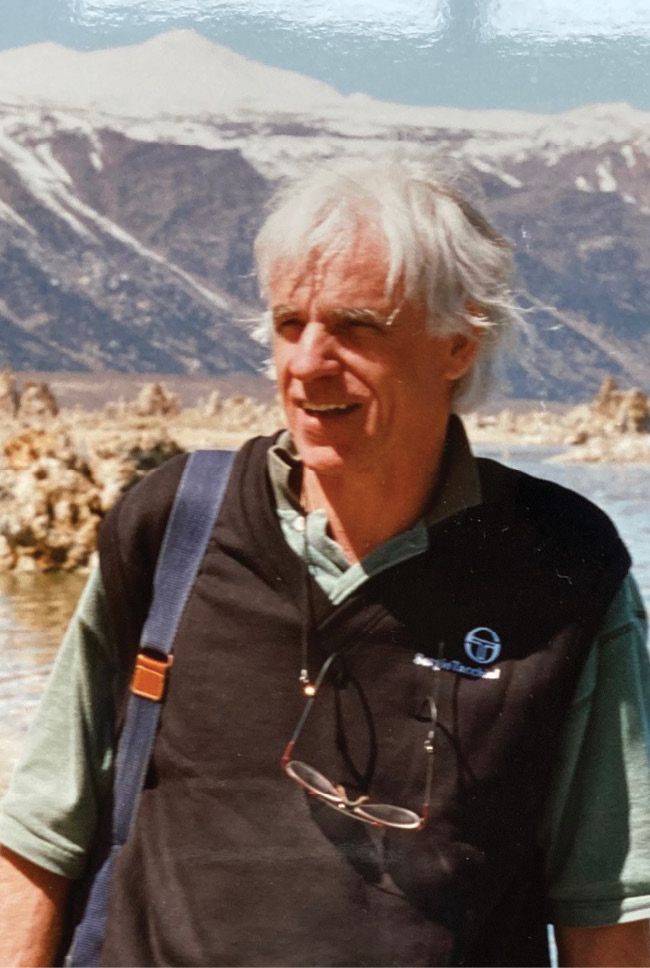Karl von Meyenn
DOI: 10.1063/PT.3.5164
Karl von Meyenn died at his home in Neuburg an der Donau, Germany, on 18 June 2022. He was a central contributor to the history of physics through his long-term efforts to edit and publish the letters and writings of key physicists of the early to mid 20th century. Letters were then a primary means of collaboration among physicists. Through his work, Karl opened up valuable insights regarding the development of physics and the physicists who developed it.

Karl von Meyenn
MEYENN FAMILY ARCHIVE

Karl was born in Potsdam, Germany, on 7 November 1937. After World War II, he and his parents moved to Chile. There Karl studied physics at the Southern University of Chile in Valdivia and at the Pontifical Catholic University of Chile in Santiago, where in 1965 he was the university’s first recipient of a diploma in physics.
The following year Karl returned to Germany to pursue his doctorate at the University of Freiburg. He completed it under the direction of Siegfried Flügge in 1971 with a dissertation on the order–disorder transition in sodium nitrite. He and his wife, Felicitas, then moved to Chile, where Karl taught at the Pontifical Catholic University of Chile. In September 1973, just days before the country’s military coup, they returned to Germany. Karl had joined the University of Freiburg as a senior assistant in theoretical physics with Helmut Reik.
In 1975 Karl turned his attention to the history of science. In collaboration with Victor Weisskopf, Armin Hermann, who was head of the program for history of science and technology at the University of Stuttgart, invited Karl to undertake a long-term project to edit and publish the complete scientific correspondence of the brilliant and influential physicist Wolfgang Pauli. The multivolume project, titled Wissenschaftlicher Briefwechsel mit Bohr, Einstein, Heisenberg u.a.; Scientific Correspondence with Bohr, Einstein, Heisenberg a.o., was published by Springer (1979–2005) and funded by the German Research Foundation and later by CERN, ETH Zürich, and the Swiss National Science Foundation.
Karl took on the editorial task with his characteristic enthusiasm and intellectual rigor, as witnessed by one of us (Cassidy), then a postdoctoral fellow in Stuttgart. From the late 1970s until his untimely death in 1986, Roman Sexl, a University of Vienna theoretical physicist and historian of physics, became both a mentor and a friend to Karl and profoundly influenced Karl’s development as a historian and his status as editor of the Pauli letters.
By the time he left Stuttgart in 1985 to become a German exchange professor of history of science at the Autonomous University of Barcelona in Spain, Karl had completed the first two volumes of the Pauli correspondence, comprising more than 1400 pages. He had also written an essay for the book Atomvorstellungen im 19. Jahrhundert (Conceptions of the atom in the 19th century) and, with Sexl and Klaus Stolzenburg, an edition of Niels Bohr’s writings on the Copenhagen interpretation of quantum mechanics. While in Barcelona, Karl published several works in Spanish and a collection with Charles Enz of Pauli’s writings titled Das Gewissen der Physik (The conscience of physics). Karl’s Barcelona colleagues remember him for greatly strengthening the university’s emerging doctoral program in history of science and for his knowledge and his extensive library, which he generously shared.
At the invitation of Hans-Peter Dürr, Karl moved in 1991 to the Max Planck Institute for Physics in Munich. Aside from a six-month sojourn as a guest editor of the Einstein Papers Project in Boston, Karl continued work on the Pauli correspondence. He also published numerous journal articles and a two-volume study of the lives and works of the great physical scientists from Aristotle to Murray Gell-Mann. Upon reaching retirement age, he moved in 2000 to his last destination, the Institute for Theoretical Physics at Ulm University, which was directed by Frank Steiner, a good friend and colleague. There Karl completed the last volumes of the Pauli correspondence, published in 2005. Six years later he published a two-volume edition of Erwin Schrödinger’s letters on wave mechanics and the cat paradox in quantum mechanics.
Karl’s massive volumes of the Pauli letters project amounted to roughly 7400 pages with more than 3200 edited and annotated letters, along with commentaries on their historical context. “His edition of the Pauli correspondence is fundamental for all historians of modern physics,” writes the historian John Heilbron in an email to one of us (Hoffmann). “Truly a monumental achievement.” From 1919 to his death in 1958, Pauli covered in his correspondence nearly the entire sweep of fundamental physics in his lifetime—from the early development of quantum mechanics and its interpretation through its applications and adaptations to nuclear physics, beta decay, and high-energy and particle physics, as well as such other topics as renormalization and parity violation. In addition to the science and personalities of their authors, the letters reflect the impact of Nazism and Fascism, World War II, and the Cold War. All lent a vital human dimension to the volumes of insightful scientific correspondence.
Karl was an avid reader of not only history and science but also classical literature. He spoke fondly of his younger days in Chile when he rode horses across the plains and worked as a gaucho on a cattle ranch. We sadly miss Karl’s infectious enthusiasm, his tireless devotion to his work, and his friendliness and hospitality.
More about the Authors
David C. Cassidy. Bay Shore, New York.
Dieter Hoffmann. Max Planck Institute for the History of Science, Berlin, Germany.
